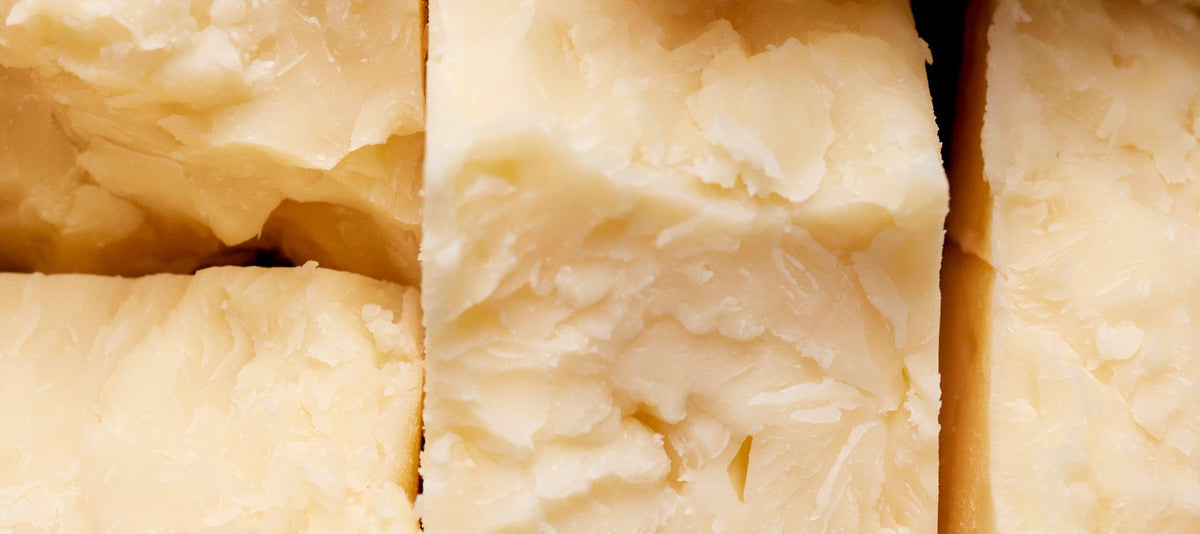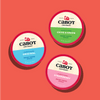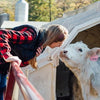
Cheese Board Sensory Building Pairing
Friends and family gather 'round. It's cozy season, and we invite you to turn your gatherings into an unforgettable flavor-filled experience. The Cabot Sharpness Tasting Sampler is a deliciously simple way to plan a cheese-tasting party, and our resident Cheese Professional & former Cheese Grader, Craig Gile, (who was just named as one of the 2024 World Cheese Championship judges!) is here to take you through the pairing process in this step-by-step guide that'll make you feel like an expert in no time.

Guided by Craig's wealth of cheese knowledge, this tasting experience begins by letting the cheese reach room temperature, ensuring their flavors are fully expressed. He also recommends avoiding unnecessary cutting to avoid waste and drying out, opting for palate cleansers like apples and crackers, and arranging the cheese from mild to bold. So grab your Sharpness Tasting Sampler, and let's get this party started.
Getting Started
-
Let the cheese come up to room temperature so the flavors fully express for a minimum of 90 minutes to two hours. Let the cheese warm up in block form rather than cubed or sliced to reduce a dried cheese surface.
-
Do not feel the need to cut the entire block of cheese at a party. It will avoid waste and will also prevent the cheese from drying out.
-
Grab some palate cleansers. Think sliced apples, pears, neutral crackers, or bread. These are great options to eat in between samples.
-
Cut a thin slice of each cheese. It's not an exact science, but you want a good mix of interior and exterior. Cut it slightly differently each time.
-
Arrange the cheese from mild flavor to bold, sharper flavor, and label them with numbers or letters to help you keep track.
-
Write down which numbers or letters correspond with the packaging to help you identify what is what. Keep the packaging to show people afterward so they know what they want to buy (because you know they'll want to!)
-
Do not cross-contaminate the knives if there are different flavors and cheese types.
-
Have all your tools ready. Napkins, toothpicks, water, or wine if it's that kind of party!
-
Get a notebook, you'll want to take notes.
Ready to Taste
-
Remember to work your way from milder flavors to bolder, sharper flavors. The cheese gets more complex with bigger and bolder flavors as you go. The body will become crumblier. As the cheese gets older in age, you might find internal and external crystals. This is a natural part of the cheese aging process and is completely safe.
-
As a group, try the first cheese. Allow yourself to be fully present in the moment—maybe you shut your eyes or turn away from the group.
-
Note the appearance, aroma, rub it between your fingers. Swish it around your mouth a little bit. Think about the five basic flavors (acid, salt, sweet, bitter, umami) and rate it on a scale of 1 to 5.
-
Ask yourself these questions and write down your observations.
-
What does this remind you of? Describe it. For example, does it taste like lemon? Something else?
-
Which receptors are firing?
-
Be mindful of your saliva development. How long does it take to develop?
-
Talk with your group about what you tasted.
Yes, it's that easy to be cheesy! As you make your way through, be sure to follow Craig's lead in savoring nuances from flavor to flavor. And remember, this isn't just a tasting—it's a full-on sensory exploration, an opportunity to indulge in delicious cheeses and share notes, but more than anything, it's a fun opportunity to create lasting memories with your favorite people. Enjoy, cheese lovers!














